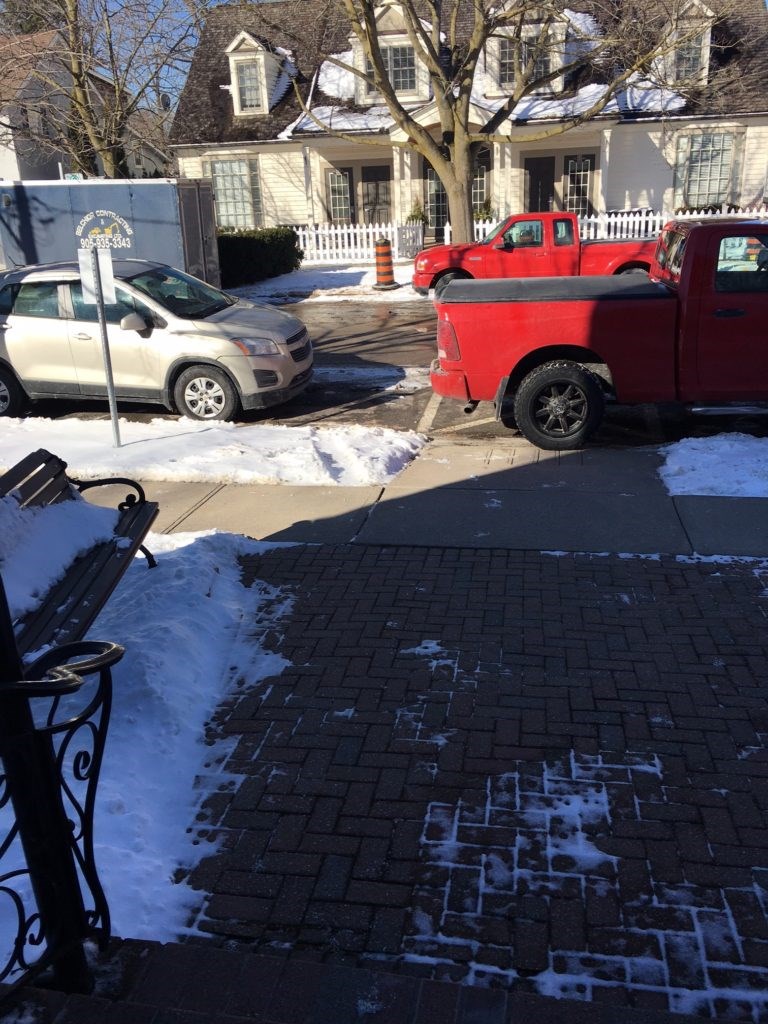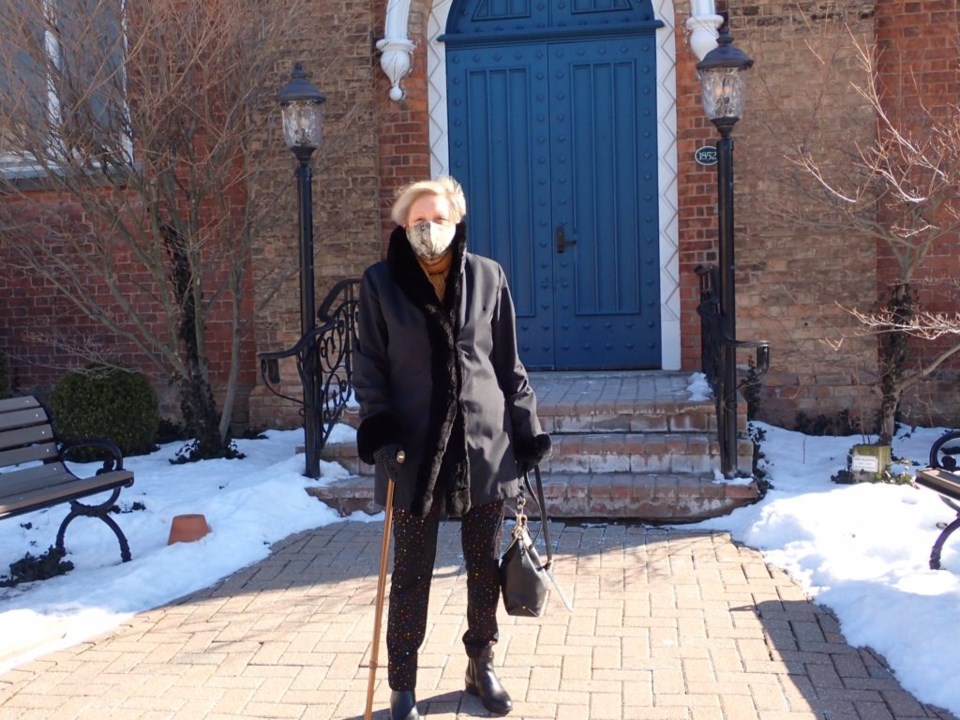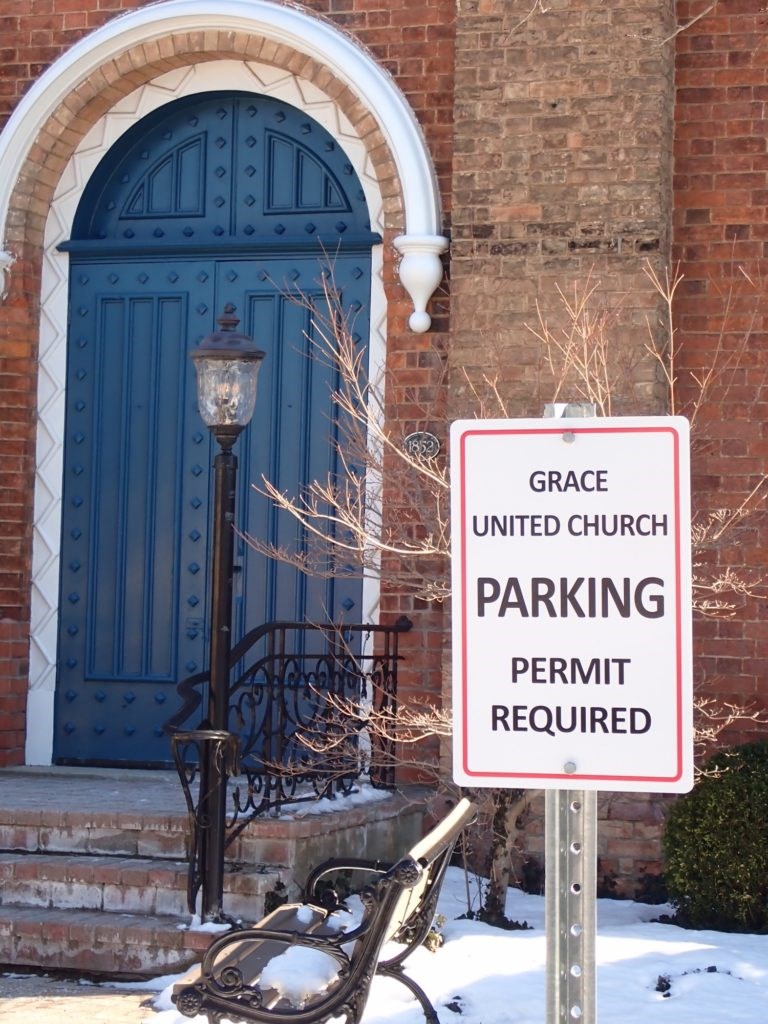
The origin of Grace United Church’s parking situation can be traced back a long time.
To 1870, to be exact, when the church, located on Victoria Street in the centre of the Old Town, was constructed.
Since then, the town has grown up around it, with no property beside the church or behind it for parking.
Church trustee David Gilchrist asked council recently for some help with the situation in December, going over some of the history of parking issues, and is hoping for a solution soon.
Currently, the church has installed three signs reserving parking spaces for the church, and a fourth for the minister, feeling a decision was made years ago that the spaces were theirs. Instead, the town has asked that the signs be bagged until council has dealt with the issue.
Parking really wasn’t a problem until 10 years ago, Gilchrist told council in December.
For new people coming to town, staff at local businesses, the hotel, store and condominium construction workers, and even the immediate residents of nearby apartments, four unsigned spaces intended for Grace United Church have become free parking. They arrive early in the morning, and park all day.
Being occupied by visitors to the town is an exception to the rule, because they are taken early and occupied for long periods of the day, he said.
“We even have people parking overnight and throughout the weekend.”
Although the church has shared these four spaces over the last six decades quite willingly, they have ultimately lost the use for which they were initially created for, he said.
“As you are very well aware, the town has changed drastically since that period,” and with the changes have come the current problems facing the church, he told council.
Long-time church member Gail Martin, chair of the finance committee and responsible for cheque-signing to pay the church’s bills, is finding it increasingly difficult to get to the church, where she works about two afternoons a week. She has multiple sclerosis, and after a bad fall in May, 2019, when she broke her femur, she spent months in a wheelchair and at Pleasant Manor to convalesce after surgery. “I didn’t know if I’d be able to walk again,” she says. Now she walks with a cane, but very carefully, sometimes using a walker instead.
And at 72, she adds, “I’m one of the younger ones.”
Even a spot well-marked in front of a wheelchair ramp is often taken when she gets to the church, she says.

She recently arrived, had difficulty finding a place to park, and then couldn’t get up on the sidewalk. So she made her way to the ramp, which was partially blocked by a pick-up truck covering the X painted on the road by the ramp.
It was icy and slippery, she says, and with her cane in one hand and holding on to the truck with the other, she pulled herself up the ramp to the sidewalk, “and hurt myself doing it.”
As she sat in the church doing her work, she had to fight back tears, worrying about how she was going to get down the icy ramp and back to her car. She did it the same way in reverse, very carefully, clinging to the back of the truck.
Since there are no Sunday church services during the pandemic, she says, they are videoed Thursday evenings. Her husband John has been asked to sing during the recording of next week’s service, but she is already worried about getting him into the building. At 86, he suffers from spinal stenosis, and uses a walker.
She has to pull over, help him out of the car, get his walker out, help him into the church, find a place to park and then get up the ramp with her cane and into the church herself.
When Gilchrist spoke to council, he talked about Martin, her husband, and other seniors with walkers or in wheelchairs, and the difficulty they have parking and getting up the ramp.
They have difficulty attending services, meetings, functions and choir practices. Conducting a funeral or a wedding is extremely difficult, he told council. The church secretary can’t park. Neither can the custodian, the choir director, the treasurers, or sometimes, the minister. Those who come to the church to look after the grounds, for snow removal, or to do maintenance on the historic building, have nowhere to park.
He also spoke of the senior members of the church, including Mary Snider and David Greaves, who remember asking for solutions in the past, and have some documentation to back up their requests.
When parking on Victoria Street became one-side only, the church was allowed to create a cut-out, or indentation, from the curb in front of the church, to create four parking spaces, Gilchrist told councillors.
“This consists of two parking spaces on either side of a concrete ramp to the street for wheelchair access. Our few remaining senior members of both the congregation and this community are adamant that this was done with town council’s blessing and authority.”
This summer, Snider, at 97 still the trustee chair, sat at her kitchen table with Greaves, pouring over many documents, locating two they felt were relevant, Gilchrist told council.
One was a letter written in 1960, about a request for a retaining wall on the boulevard, and the other, a receipt dated July, 1960, for $100 from the church for curb construction. The original request for a retaining wall of some kind was changed to the construction of the curb after a review by the town’s works department, he said.
In 2010, he said, the church secretary, frustrated by her inability to park in front of the church, approached the town about signs designating the parking spaces for use by the church.
The response from staff spoke of a traffic study underway to look at maximizing parking spaces for the public, and said they would work with the church on the lack of parking upon completion of the parking analysis. At the time staff thanked them for their patience, said Gilchrist.
“Well, we’re all 10 years older, and our congregation feels we have been quite patient,” he told council.

Since that 2010 request, “we are unaware of any attempts from town staff to develop permanent options. The primary problem we see now is that these spaces were somehow incorporated into the public parking supply, when they should not have been. We feel that they should never have been included in any town parking study in the first place,” said Gilchrist. “This policy has created the problem we are now faced with.”
The church has tried several measures, involving red cones, marked with no parking or reserved parking, when they were needed for church use. “These are ignored, thrown onto the boulevard, stolen or driven over.”
Council agreed in December to ask staff to look at the problem and report back, in February, with some options to solve the church’s problems.
After hearing about Martin’s experience, and dealing with a parking situation that occurs daily, he is hoping for a speedy and satisfactory resolution, and permission for the opportunity to allow the signs to do the job for which they were intended — save just four spaces for the church.